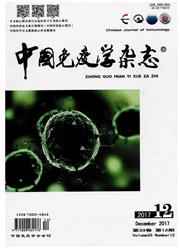

 中文摘要:
中文摘要:
目的寻找目前常规治疗方案下,造成Ⅳ型狼疮肾炎(lupus nephritis,LN)患者治疗无效的临床风险因素。方法纳入经肾脏穿刺病理活检确诊为Ⅳ型LN,经过激素及常规免疫抑制剂治疗并且随访超过6个月的患者198例,按照6个月后的治疗效果分为有效组(148例)和无效组(50例),从人口学特征(性别、年龄、SLE病程、LN病程),临床表现(面部红斑、盘状红斑、光过敏、血管炎、皮肤紫癫、雷诺征、口腔溃疡、发热、关节痛、浆膜腔积液、脱发、外周神经炎、淋巴结炎、高血压、恶性高血压、肉眼血尿等),实验室检查(血红蛋白、网织红细胞、白细胞、血小板、血白蛋白、球蛋白、血肌酐、尿素氮、血尿酸、三酰甘油、总胆固醇、尿蛋白定量、尿红细胞),自身抗体(抗核抗体,抗双链DNA抗体,抗心磷脂抗体,抗Sm,SSA,SSB,抗核糖体蛋白,抗中性粒细胞胞浆抗体等),病理学指标(袢坏死、白金耳、袢血栓、球形硬化比例、节段硬化比例、新月体比例、纤维性比例、间质急性病变、间质慢性病变、间质细胞浸润、膜性病变等),治疗方案及转归情况各个方面分析组间差异,使用Kaplan-Meier法筛选影响Ⅳ型LN临床疗效的风险因素,建立多因素COX回归模型分析其独立风险因素。结果资料完整且规律随访的Ⅳ型LN患者共198例,无效组50例(占25.25%),有效组148例(占74.75%),2组诱导期治疗方案(单用激素,激素分别联合环磷酰胺、雷酚酸酯、FK506、环孢霉素A等)无统计学差异。进一步探究在常用治疗方案(激素及免疫抑制剂)下影响其疗效的风险因素发现,与有效组相比,无效组光过敏、肾功能异常、中等量蛋白尿、抗核糖体蛋白抗体阳性比例、肾小球球性硬化比例、慢性化指数(chronicity index,CI)、肾间质慢性化程度、肾间质细胞浸润程度及非炎症坏死性血管病变(non infl
 英文摘要:
英文摘要:
Objective To investigate the clinical risk factors for unresponsive common approaches on the treatment of class IV lupus nephritis(LN).Methods The class IV LN patients were confirmed by renal biopsy,treated with glucocorticoid and common immunosuppressive agents and followed up for more than6 months.They were divided into two groups according to curative effect after treatment for 6months.The differences between the two groups were analyzed by means of demographic characteristics,clinical manifestations,laboratory tests,autoantibodies,pathologic indicators,treatment regimens and outcomes.The possible influencing risk factors on the classⅣ LN were analyzed by Kaplan-Meier,and the independent risk factors were analyzed by multivariate COX regression modeling.Results A total of 198 patients with complete data and regularly followed-up were enrolled.They were divided into two groups:50(25.25%)patients in non-response group and 148(74.75%)in response group.There was no significant difference between two groups in responsive rate under various common induction therapies.And then,the risk factors influencing the curative effects of class LN Ⅳ patients were further explored.Results showed that the nonresponse group had a higher rate of photosensitization,renal dysfunction,moderate proteinuria,the anti-RNP positive,renal glomerular sclerosis,CI,chronic interstitial lesions,interstitial cellular infiltration and NNV than in the response group(P〈0.05).Kaplan-Meier results showed that a decreasing response happened in the group with a higher rate of renal dysfunction,chronic lesions and interstitial cellular infiltration(Log Rank P〈0.05).Then multivariate COX regression model investigated that renal dysfunction was an independent risk factor for poor curative effect.Conclusions Under the treatment of common induction therapy,the classⅣ LN patients with baseline renal dysfunction have a terrible curative effect.In addition,it is possible that the baseline anti-RNP positivity,chronic interstitia
 同期刊论文项目
同期刊论文项目
 同项目期刊论文
同项目期刊论文
 期刊信息
期刊信息
